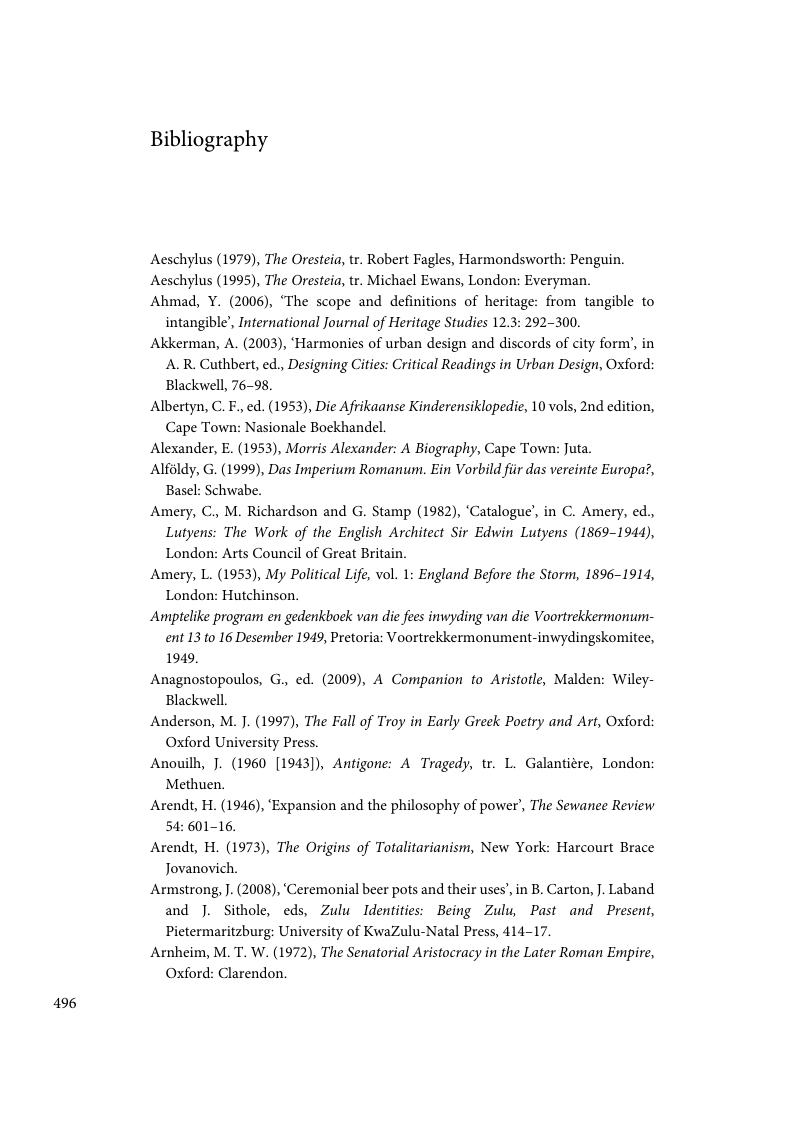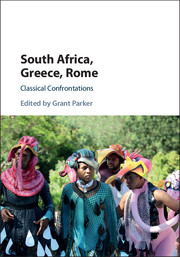Book contents
- South Africa, Greece, Rome
- Frontispiece
- South Africa, Greece, Rome
- Copyright page
- Contents
- Plates
- Illustrations
- Contributors
- Preface
- Part I Prologue
- Part II Conceiving Empire
- Part III Conceiving the Nation
- Part IV Law, Virtue and Truth-Telling
- Part V Cultures of Collecting
- Part VI Boundary Crossers
- Part VII After Apartheid
- Bibliography
- Index
- References
Bibliography
Published online by Cambridge University Press: 28 September 2017
- South Africa, Greece, Rome
- Frontispiece
- South Africa, Greece, Rome
- Copyright page
- Contents
- Plates
- Illustrations
- Contributors
- Preface
- Part I Prologue
- Part II Conceiving Empire
- Part III Conceiving the Nation
- Part IV Law, Virtue and Truth-Telling
- Part V Cultures of Collecting
- Part VI Boundary Crossers
- Part VII After Apartheid
- Bibliography
- Index
- References
Summary

- Type
- Chapter
- Information
- South Africa, Greece, RomeClassical Confrontations, pp. 485 - 495Publisher: Cambridge University PressPrint publication year: 2017

